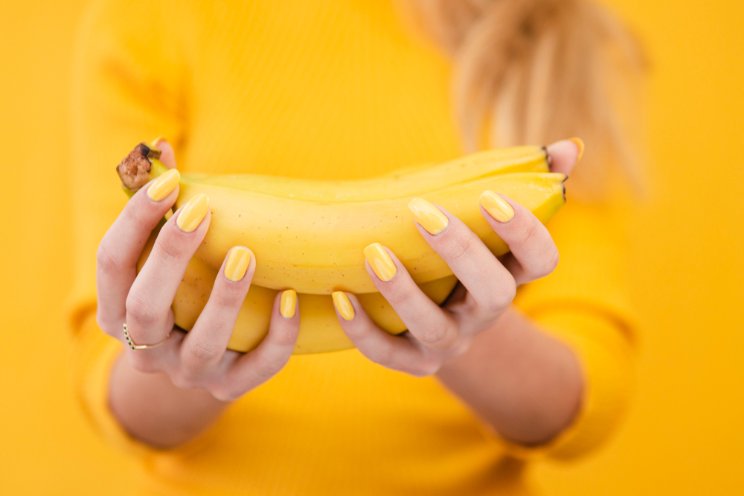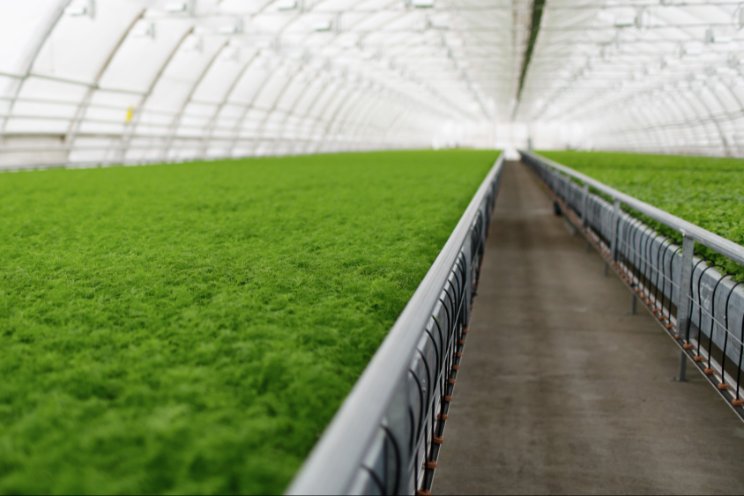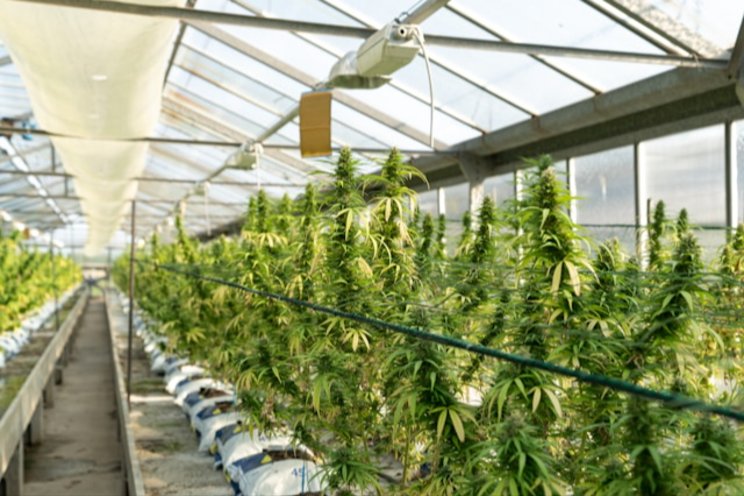From insects to vertical farming
Added on 24 June 2020

Soil Enhancers
Losing land quality to climate change and soil degradation isn't an option when you have a population of 10 billion people to feed by 2050.
Healthy soil relays on humus, which is dark organic material that forms in soil when plant and animal matter decay. This organic reservoir takes time and effort to make and isn't always economically viable or easy for commercial farmers to sustain, especially in warmer climates.
But what if there was a technology that could do the hard work for you? German-based startup, Novihum Technologies has invented a man-made humus concentrate with the goal of making soil healthier and enhancing crop productivity on limited land.
"We have developed a technology that allows us to manufacture a stable humus concentrate - a concentrate of really good organic matter that is chemically indistinguishable from what you find in nature," says Virginia Corless, Chief Growth Officer at Novihum Technologies.

Photo by Novihum Technologies.
The product's main ingredient may take some by surprise and proves to be a double-edged sword in terms of sustainability depending on how it's used. This ingredient is brown coal, the same coal that contributes to carbon emission when burned for energy.
"Well we take that, and we reverse it and we make it a strength," says Corless. "All that carbon is fantastic and useful and good for the world if you put it in the soil and not in the air."
Coal is plant material that has been transformed in the earth over millions of years. As a result, it contains the same molecular building blocks as traditional humus found in soil, although this form of humus varies slightly.
Through a chemical process using nitrogen, Novihum transforms those building blocks to mimic the humic substance that is responsible for soil and plant growth, not only saving farmers the time, money and labor of creating their own but also by using coal sustainably.
"We take a resource that is really difficult when used for its current primary purpose and transform it into a tool that can not only help farmers profitability, not only help the sustainability of agriculture but really help us feed the world," says Corless.
Urban Agriculture
Cities are the most densely populated places on the planet, as a result, they have the highest demand for food. Henry Gordon-Smith, Founder and Managing Director of Agritecture Consulting estimates by 2050, 80 percent of agriculture demand will come from these areas, so why aren't they a part of the food supply chain?
He highlights the untapped potential of urban farming from soil, greenhouse and vertical, all these methods can work as an adaptation to climate change and enhance food production.
"If there were smart strategies, if there were smart investors that were saying, we can have a city and have agriculture together, we would both protect our food supply, we would actually accelerate young people and technology into the ag space, and we could create resilience against climate change that is affecting our food supply, " Gordon-Smith says.
Right now, Paris France is a world leader in urban agriculture and points the way for many other cities to follow in urban farming development through the help of not only investors and entrepreneurs but also political leadership.
The Paris government launched Parisculteurs in 2016, an initiative whereby the city works with developers and government spaces to create areas for urban agriculture, and encourages urban farmers to pitch their business plans for funding. The project aims to cover the city's rooftops and walls with 100 hectares (247 acres) of vegetation by 2020.

Photo from Agritecture Consulting: A rooftop urban farm on top of the RATP-building in eastern Paris.
"They had about 15 farms in the first year, about 30 in the next year and the third year they had 35 farms," explains Gordon-Smith. "That translates to about 16 hectares of urban farming space in a city like Paris, very expensive, historical buildings, not the best climate year-round, and yet they have been able to accelerate that and become a global leader in urban ag."
Paris isn't alone in its efforts, in fact, urban farming is staging a comeback in cities around the globe. More communities are beginning to realize the benefits that come along with including agriculture in city planning. From food security to local job creation and access to green space, this practice is paving the way for healthier and more sustainable communities.
Insect Protein
Eating bugs may not seem appetizing, but insects are not only a sustainable alternative protein source, but also have nutritional benefits. While most consumers aren't ready to include insects in their diet just yet, a Montreal-based startup thinks our furry friends are up for the task.
Paul Shenouda, CPO & Co-Founder of Wilder Harrier, tells Xtalks he was inspired to create bug-based pet treats after reading a UN report that indicated the need for more sustainable protein sources.
"They suggested insect protein, like crickets, black soldier fly. All these crazy surprising proteins that we would not be ready to eat right now in North America," he explains. So, we were thinking what's an industry, who is a client ready to eat insects?"
For Shenouda pet food was the perfect match, proving to be a bias-free industry where the final consumer - the family pet - doesn't have an opinion towards the product.

Photo by Wilder Harrier.
Beyond using a sustainable protein that requires fewer resources than most, the company is also using upcycle ingredients like repurposed pulp from juice companies that would normally be wasted.
"Our mission is not just using sustainable proteins per se that use fewer resources, but also working in a circular economy fashion too," said Shenouda.
Although other alternative proteins have grown in popularity over the last couple of years, as demonstrated by the success of the Beyond Meat burger and the Impossible burger, Shenouda suggests insects as a protein source for consumers looking to take their sustainability efforts to the next level.
"If you are looking for something that is really radically sustainable not just incrementally sustainable, it absolutely makes sense to make that switch," states Shenouda.
With both Gen Z and Millennials holding these values high, this food category looks promising for humans - and their pets in the near future.
Climate change and food security go hand in hand, therefore making changes in our food supply system imperative. Companies that take the risks and seek out opportunity now will reap the benefits in the long-term, and these handful of trailblazers are setting the stage for what to expect in the years to come.
Source: xtalks
Source: xtalks
More news















